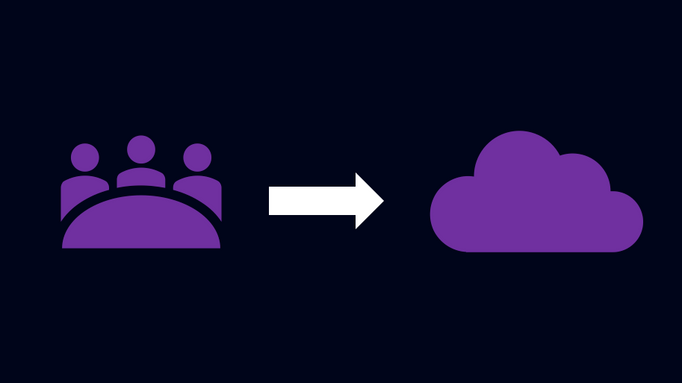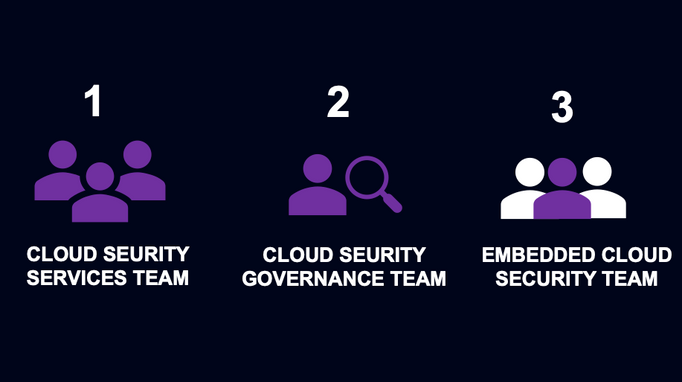This blog is part of an ongoing series dedicated to addressing the imperative topic of Cloud Security Transformation.
Yet, when executed meticulously, Cloud Security not only serves as a formidable deterrent against the most sophisticated threat actors but also functions as a catalyst in streamlining your operations, facilitating the expeditious attainment of your business objectives.
The go-to move is usually to tackle this challenge with technical expertise; it's more easy to grasp. When someone tells you they are not sure how to do infrastructure as code, policy as code, networking, logging, or threat detections in the cloud compared to on-premise, you have a specific problem and need. However, delving into cloud migration entails a broader transformation. Technical engineers usually know and understand what the cloud entails, but the same cannot be assumed for the broader business spectrum. We need to remember that security primarily hinges on people and processes, with technology playing a supporting role. That being said, for an advisor to be successful today, a technical understanding is indispensable for success.
Business strategy
So, why would a business consider shifting to the cloud? In our earlier discussions, we've emphasized that cybersecurity poses a business risk, and IT typically plays a role in supporting and advancing business objectives. But what prompts this move to the cloud, and what advantages does it offer that your current hosting or on-premises setup might not provide?

Often, this question remains unanswered, and cloud migration seems driven by the fact that it's what everyone else is doing or where the next generation of IT professionals aims to work. Is this approach entirely wrong? Not necessarily, but moving your applications, data, and code to the cloud may not inherently change much, apart from potentially increasing costs. Why should those of us in the security realm be concerned about this? Shouldn't we secure whatever the company or client chooses to run in the cloud? While this perspective may hold for some consultancies and employees, many of us are deeply interested in the business side of things and are motivated by helping the business achieve its goals securely in the cloud. To answer a question with another question, how can we provide sound advice without a firm understanding of the company's business strategy?
Cloud technology opens doors to new possibilities, alternative work methods, increased speed, and enhanced security. However, it's vital to approach it correctly. To be candid, there are cases where keeping data and workloads on-premises may be the wiser decision. The cloud doesn't offer a one-size-fits-all solution; migration should be driven by the value it brings, not just following the latest trend.
I see more and more people saying, "Cloud is just someone else's computer," but this phrase falls short of explaining the benefits of cloud computing. It may lead to the misconception that on-premises and cloud solutions are essentially the same, failing to convey the substantial transformation that occurs when transitioning from on-premises to the cloud.

Some of the high-level strategic reasons we see for business to move to cloud is:
- Insourcing:
- Opting for cloud services allows you to take greater control of your IT environment. This not only enhances security but also reduces dependence on external managed service providers. Managing most aspects in-house provides flexibility but also comes with increased responsibility
- Time to market:
- When the cloud is leveraged effectively, it can significantly reduce the time it takes to bring your products or services to market. By implementing pipelines that support continuous integration and continuous deployment, you can facilitate developers in swiftly pushing code changes. Moreover, you can integrate robust security and testing measures into these pipelines, aiding developers in writing secure code from the outset.
- Moving cost from Capex to Opex:
- Traditionally, investing in the hardware required to operate an in-house data center has been a capital-intensive endeavor. With the cloud, you adopt a "pay as you go" model. This means that if you wish to test a new service, tool, or product, you can rapidly provision the necessary infrastructure, deploy your code, and gather market feedback. While a similar approach could be taken with leased hardware for on-premises setups, it's notably more complex compared to the simplicity of cloud provisioning.
- Scalability and Flexibility
- Cloud platforms provide the ability to scale resources up or down based on demand. This scalability allows organizations to quickly adapt to changing workloads and customer needs, ensuring that they have the right amount of computing power and storage available at all times.
- Levering Cloud Tools:
- Leading public cloud providers offer a wealth of readily accessible tools and services. These tools can be implemented with ease, either through user-friendly interfaces or by using code. This simplifies the process of connecting various services that your business requires, facilitating seamless operations.
- Enhanced Security:
- Properly implemented cloud solutions provide a robust security environment that is challenging for malicious actors to breach. The big cloud providers invest heavily in security measures and compliance certifications, often surpassing what individual organizations can achieve on their own. Migrating to the cloud can enhance overall security by leveraging these built-in features and allowing organizations to focus on managing security at the application and data level.
- Data-Driven Decisions:
- Cloud platforms offer powerful tools and resources that enable organizations to effortlessly collect, analyze, and derive valuable insights from their data. With the cloud's scalability and agility, businesses can harness the full potential of their data, empowering them to make informed decisions that drive innovation and growth.
Transformation of people
Moving to the cloud isn't just a technical shift; it's a journey of transformation for your organization. You need to consider how you'll transform your existing security team.
Commence by defining the role and function of your cloud security team. Will they operate as a services-oriented team, creating solutions to offer and support various business units? Alternatively, will they take on the mantle of a controlling and governance department, vested with the authority to issue directives and regulations to the operations and application teams? Or do you envision them as an embedded team, seamlessly integrated into operational and application units, essentially becoming an intrinsic part of these teams?

Once you've established how your cloud security team should function, you can then address the subsequent questions. Who will step into the role of the cloud security architect, tasked with the design and construction of a secure cloud platform? Who will shoulder the responsibility of overseeing pipelines and ensuring the implementation of secure coding practices? Who will manage vital functions such as collecting logs and configuring threat detection systems? Who will be the point person for responding to security alarms? Who will take on the leadership role, guiding the team and aiding in prioritizing their collective efforts? And finally, which tasks within this spectrum may be suitable for outsourcing?
While a universal solution would certainly be convenient, the reality is far more nuanced. Requirements will invariably fluctuate, influenced by factors such as the specific nuances of your cloud environment, your threat landscape, and the unique risk tolerance of your organization. Hence, adapting and tailoring the roles and responsibilities of your security team is instrumental in ensuring the success of your cloud security strategy.
To initiate this transformation, a strategic approach is recommended:
- In-Depth Interviews: Engage your security team members in one-on-one and team interviews. Uncover their career aspirations and enthusiasm for the cloud journey. How would they like the cloud security team to function? And why? What role would they like to take? This understanding helps align their personal growth with the organization's objectives.
- Skill assessment: Conduct a thorough assessment of your team's existing skills. This analysis will identify gaps and provide a roadmap for skill enhancement.
- Empowering Learning: Consider redistributing some tasks to provide your team with the time and space for focused learning. This might involve temporarily bringing in consultants to ease the workload.
- Investing in Education: Invest in your team's education by enrolling them in relevant courses and training programs. These initiatives empower them to navigate the complexities of cloud security confidently.

Before embarking on your cloud migration, don't overlook the human factor. A proactive security strategy that actively involves your security team from the beginning yields better results than attempting to retrofit security later. A well-prepared and well-guided team is your most valuable asset during the cloud transformation process.
It's easy to overlook the obvious, but a motivated security team contributes more to your company's security than any product or tool ever could. Take care of your security team, listen to their needs, and provide them with the support they require to succeed day after day.
The following article will cover Cloud Security Controls and Roadmap. In the meantime, please don't hesitate to provide feedback on this article or share your expectations and preferences for our upcoming content. Your input is highly valued..